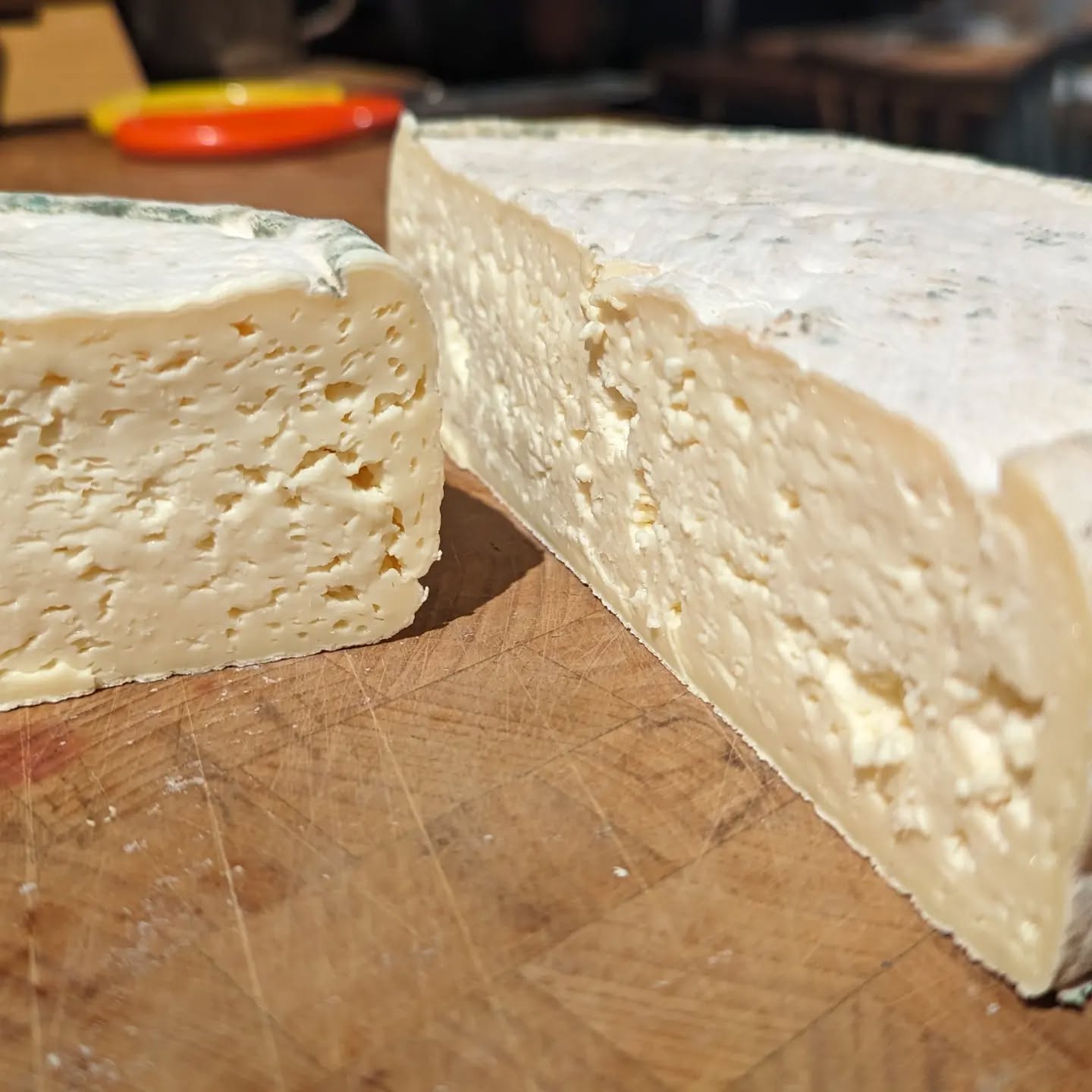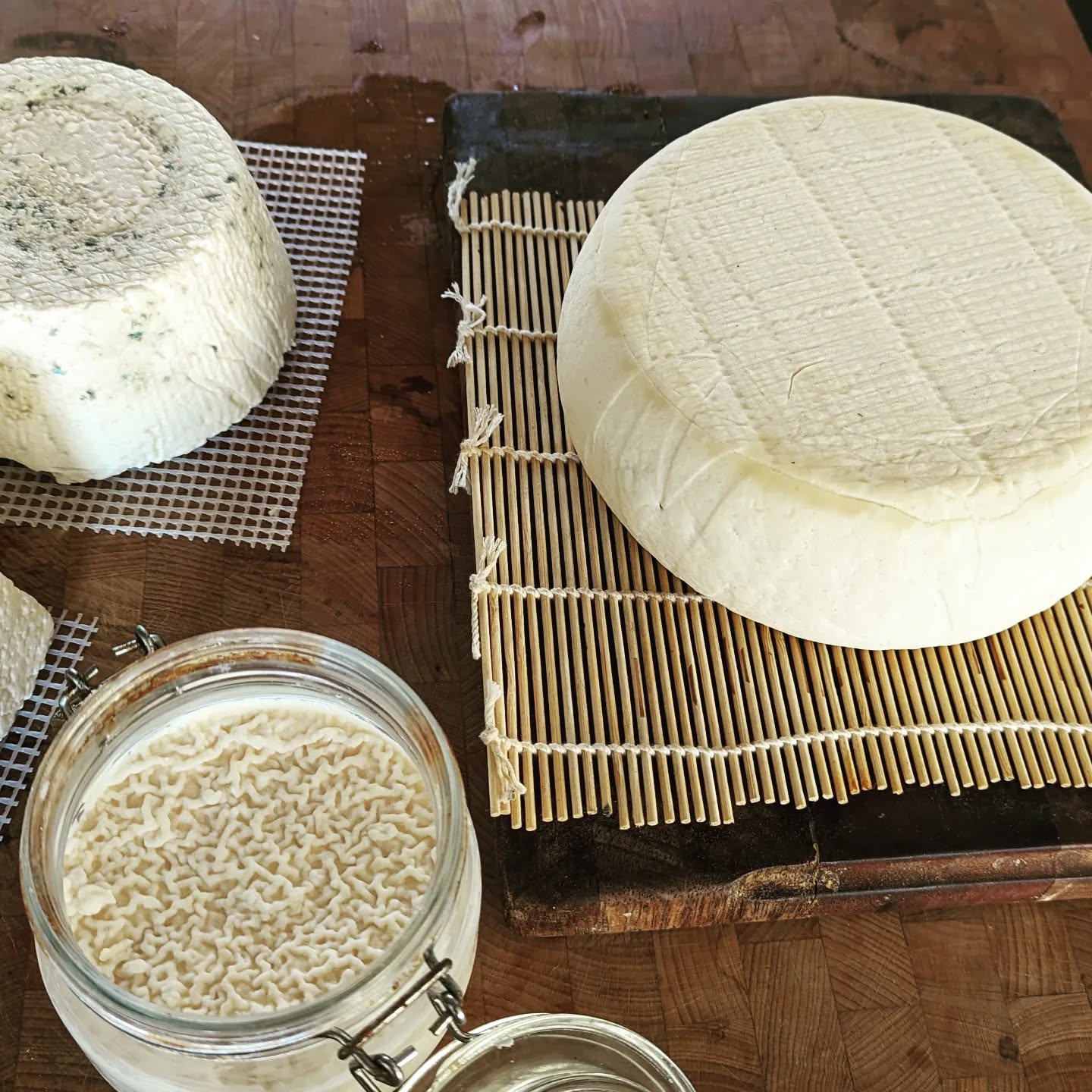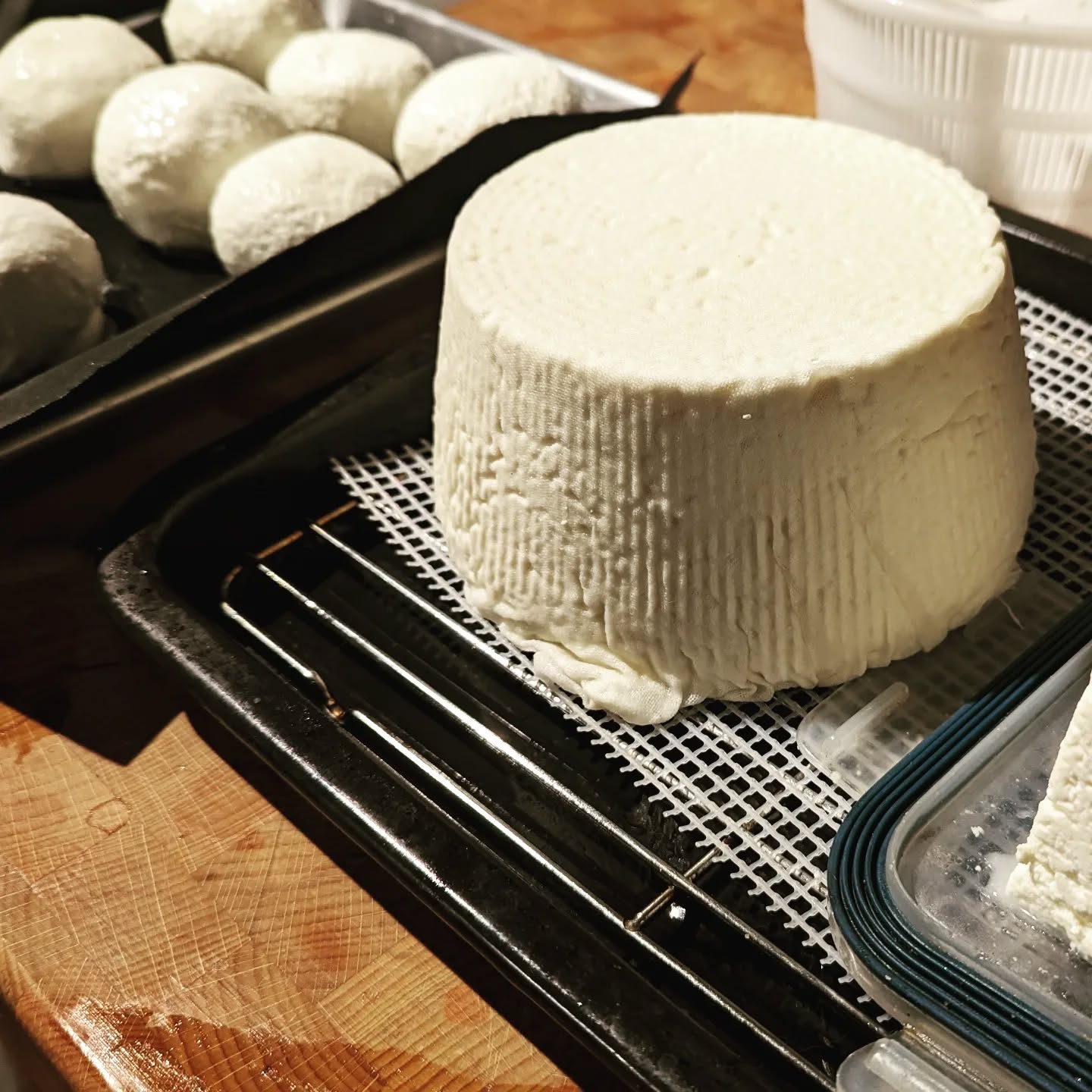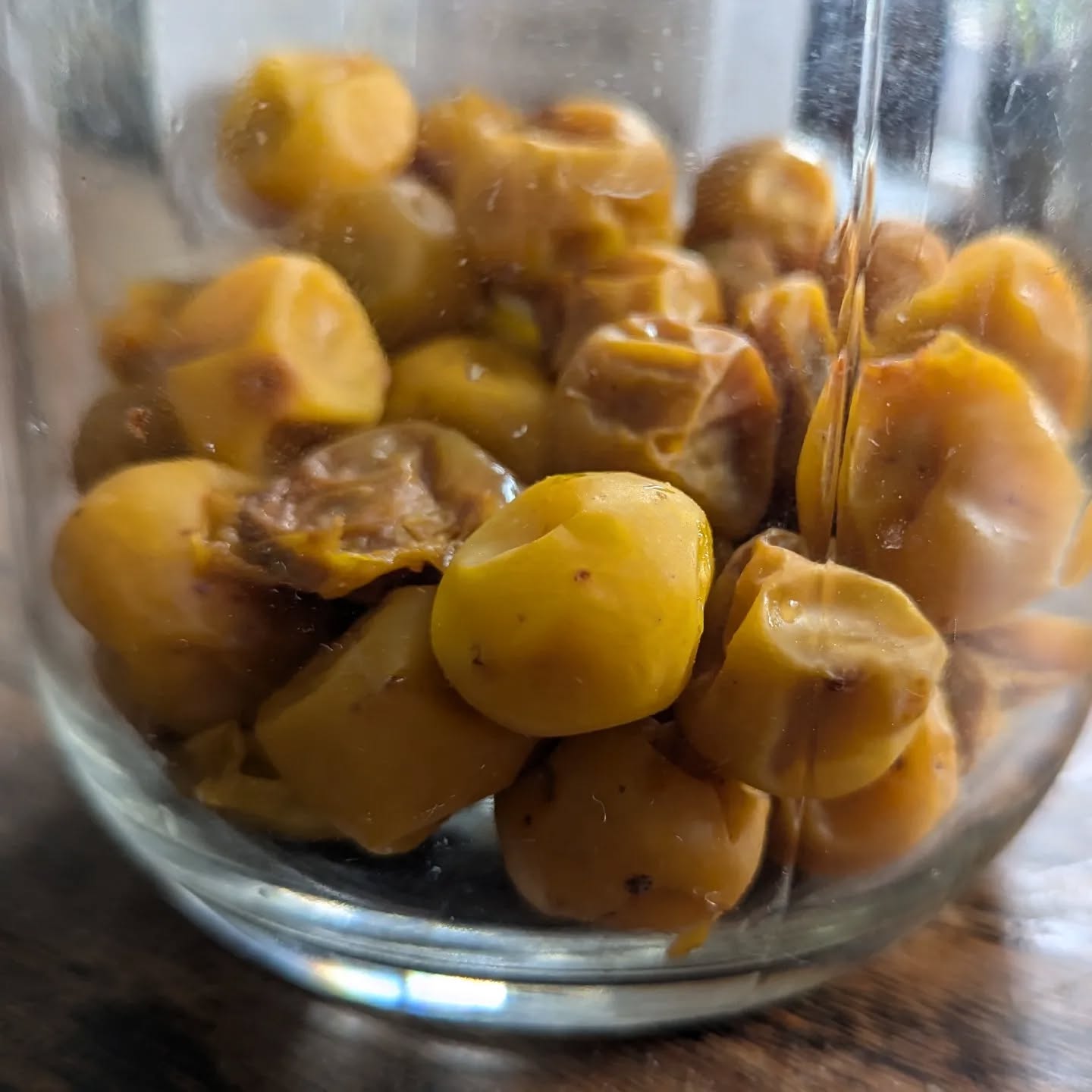· James Torr · Personal · 1 min read
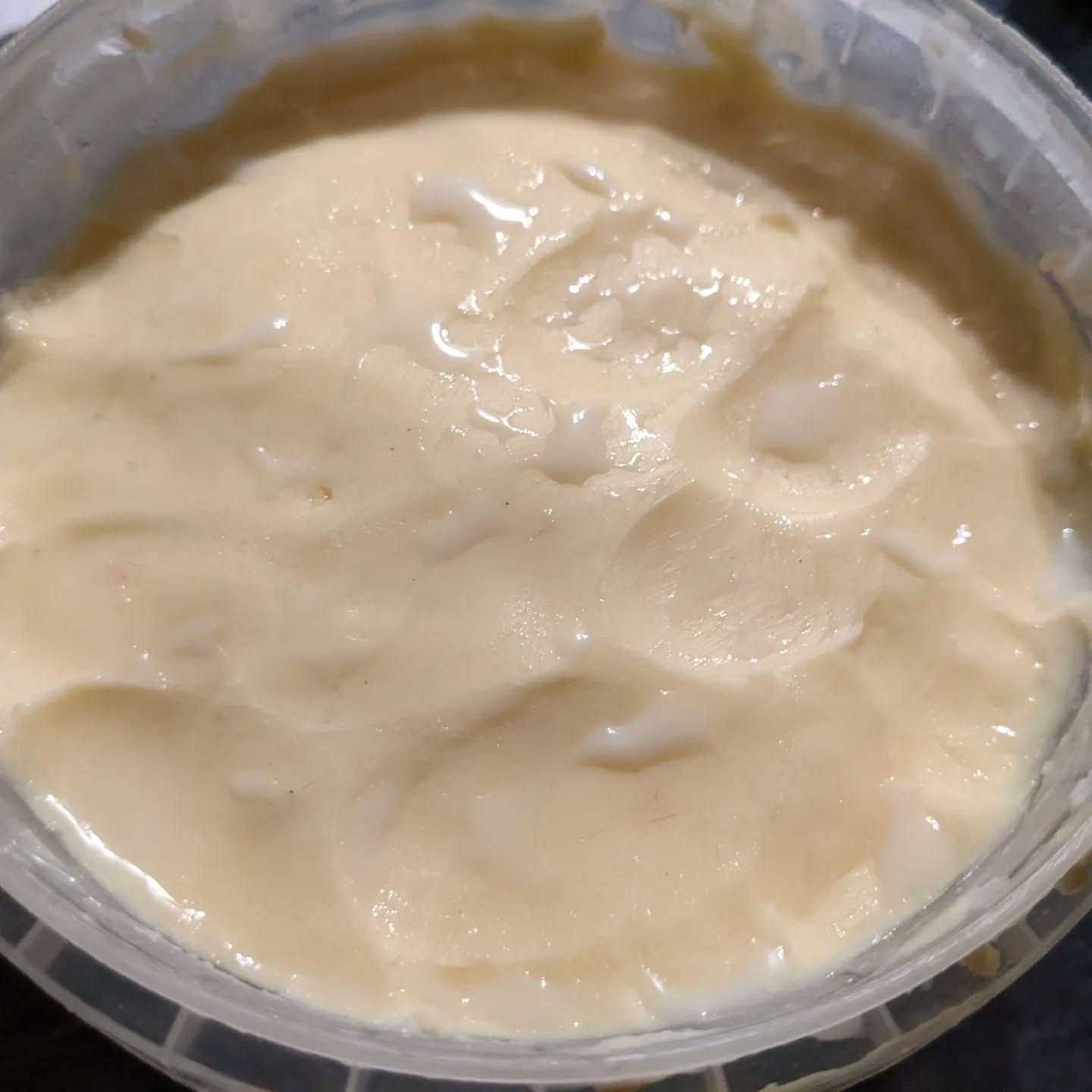
Fermented butter.
Fermented butter. Forgot to take pics of the process, so sorry about that, this is the final result! Super simple, and about the same price as normal butter, and takes a few minutes if you’re using a stand mixer.
- Grab some high fat cream. I used 1.2l of 48%.
- Add a lactic culture and ferment. You can use yoghurt culture if you have some, I used amasi, which is a South African ferment that runs at room temperature (mesophilic). This took about 36hrs as it’s cold here! It should thicken up and look like sour cream, which is what it is!
- Whisk the ever-living shit out of it. Basically over whisk it. I believe you can shake it in a jar as well. A machine whisk helps here unless you have strong arms.
- As you are whisking, It’ll go from thick solid, to whipped cream, then it’ll separate to fermented buttermilk and cream.
- Strain the buttermilk (use for baking, pancakes), and squeeze the fat until all the buttermilk is out.
